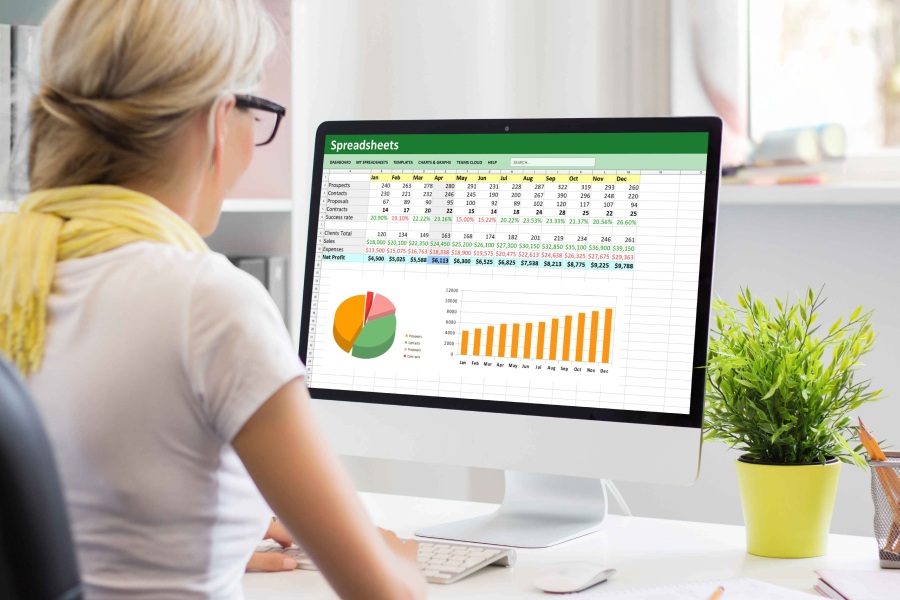A well-functioning fleet can make the difference between smooth business operations and inefficient, cost-intensive processes. This is where fleet analysis comes into play. Whether you’re thinking about modernizing your fleet, reducing costs or making your business more sustainable, a fleet analysis can provide valuable insights and solutions. But how does it work? In this article, we highlight the most important aspects and questions.
Contents
What is a fleet analysis?
A fleet analysis is a systematic approach that can be used to assess the current status of a fleet and identify optimization potential. Such an analysis enables companies to delve deep into the structures, processes and costs of their fleet and make strategic decisions.
How often a fleet analysis should be carried out depends on the size of the fleet. In general, it is advisable to take a closer look at the fleet at regular intervals – once a year, for example. A comprehensive analysis takes into account business, technical and organizational aspects. The following steps should be taken into account
1 - Determine the goals of the fleet analysis
First determine what you want to achieve with the fleet analysis. Do you want to get a comprehensive overview of your fleet, reduce costs or increase efficiency? Or is the focus on compliance with new environmental regulations? Perhaps you are also considering introducing fleet software. One possible objective would also be to check whether the vehicle fleet meets the requirements of the company. The subsequent analysis should be based on which goal has priority for you.
2 - Analyze processes and structures
The fleet analysis begins with an examination of all processes and structures in the fleet. First, outline the structure of the fleet management. Is the fleet organized centrally or decentrally and how many people and departments are responsible for managing the fleet? Then look at the individual processes and work steps, such as
- Vehicle Procurement
- Data and contract management
- Maintenance and repairs (incl. tire management)
- Settlement of claims
- Insurance Management
- Handling of fuel cards
- Fleet Controlling
- Compliance with Legal Requirements
- Are the individual work steps up to date or outdated?
- Are the processes sufficiently documented?
- Can processes be optimized with the help of digital tools? Are there process interruptions?
- If you are already using a software solution, you should question whether it still meets the requirements of the fleet?
3 - Analyze vehicle stock and utilization
The next step of the analysis deals with one of the most important aspects of the fleet: the vehicles. Check whether all vehicles are needed, whether they are efficiently utilized and whether older vehicles should be replaced by newer, more cost-efficient models. After all, not every vehicle is necessarily tailored to the company’s specific requirements. The analysis allows you to determine whether the existing vehicles meet the actual needs.
Consider, among other things:
- Number and type of vehicles
- Age and condition of the vehicles
- Frequency of use and service life
- Purpose of the vehicles
- Mileage
While some vehicles may rarely or never be used, others are overused. This can lead to unnecessary costs or faster wear. Vehicle utilization is also a decisive criterion for the purchase of additional company vehicles. When analyzing vehicle utilization, you should differentiate between personal company cars and pool vehicles:
Personal company cars
According to a study, the utilization of company cars is only around 6%. So it’s worth taking a closer look here. In this context, it is also important to consider the leasing kilometers compared to the kilometers actually driven? Are there differences here?
Pool vehicles
Are there frequent downtimes or bottlenecks at certain times of the day? Car sharing software makes it easy to analyze vehicle utilization. If necessary, it is worth expanding the mobility mix in the fleet with other alternatives such as a mobility budget or company bikes.

4 - Calculation of the total cost of ownership
The consideration of total operating costs in the vehicle fleet is a central section of the fleet analysis. The total cost of ownership (TCO) includes not only the acquisition costs, but also all expenses associated with owning and using the vehicles. If you consider all direct and indirect cost factors, you can discover hidden expenses and cost drivers in the fleet. Therefore, take a closer look at all expenditure and identify areas where savings can be made. In principle, the TCO is made up of the following cost centers:
- Acquisition costs
- Financing costs such as interest or leasing fees
- Ongoing operating costs such as maintenance and repairs, fuel costs or insurance
- Administrative expenses
- Value loss
5 - Sustainability in the vehicle fleet
Climate and environmental protection play a major role in vehicle fleets, driven by the CSR reporting obligation. The fleet analysis therefore also looks at the fleet’s environmental footprint and CO2 consumption, for example by showing how fuel costs can be reduced by switching to more efficient vehicles or optimizing routes. In this way, long-term cost savings can be realized. A thorough analysis also provides the necessary database to define realistic sustainability targets for the fleet and monitor progress. You should therefore consider the following questions when analyzing your fleet:
- What types of propulsion are used in the fleet?
- What are the CO2 emissions?
- What is the fuel consumption?
- Which vehicles can be electrified?
How does a software solution support fleet analysis?
Fleet management software can considerably simplify and optimize fleet analysis. It replaces manual processes and offers a wide range of options for data collection and evaluation. At the touch of a button, the software generates detailed reports that can be used to highlight various aspects of the fleet – such as the total cost of ownership (TCO) or the utilization of individual vehicles – and identify potential for optimisation.

Fleet+ fleet software
With our powerful fleet management software Fleet+, you can control your company’s fleet digitally, cost-effectively and transparently.




